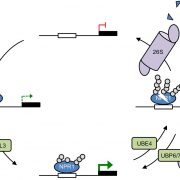
Dynamic ubiquitination determines transcriptional activity of the plant immune coactivator NPR1 (eLIFE)
Dynamic ubiquitination determines transcriptional activity of the plant immune coactivator NPR1
Plants (and animals) need to strike a delicate balance when activating their immune responses: not too much and not too little. The transcriptional coactivator NPR1 [nonexpressor of pathogenesis-related…
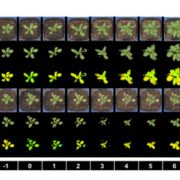
The use of high throughput phenotyping for assessment of heat stress-induced changes in Arabidopsis (bioRxiv)
With global temperatures rising, tolerance to heat is becoming increasingly important as a breeding target for crop plants, but it is a highly complex response that includes processes including plant cooling capacity, growth recovery, and maintenance of photosynthesis. Using Arabidopsis, Gao et al. developed…
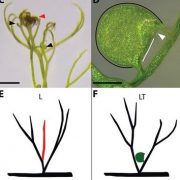
Evolution of carnivorous traps from planar leaves through simple shifts in gene expression (Science)
When is a leaf not a leaf? When it’s a trap. Just about everyone, including Charles Darwin, has been fascinated by carnivory in plants, which involves the development of structures that capture or trap food. Whitewoods, Gonçalves, Cheng et al. investigated how traps form in the humped bladderwort…

Genetic contribution of paleopolyploidy to adaptive evolution in angiosperms (Mol Plant)
Genetic contribution of paleopolyploidy to adaptive evolution in angiosperms
Comparative genomics has revealed that the angiosperms have experienced numerous whole-genome duplications (WGD), which have been proposed to have contributed to their global dominance. Following WGD, many of the…
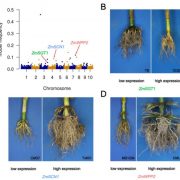
Shared genetic control of root system architecture between Zea mays and Sorghum bicolor (Plant Physiol)
Root research got a boost from Arabidopsis grown on Petri plants, but what do you do if you study something bigger, or want to see how roots grow in soil? Zheng et al. developed a new set of tools they call CREAMD-COFE [Core Root Excavation using Compressed-air (to extract the roots from soil), and Core…
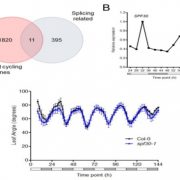
Global transcriptome analysis reveals circadian control of splicing events in Arabidopsis thaliana (bioRxiv)
Developmental programming, metabolism and plant growth are regulated by the circadian rhythm that integrates environmental signals and plant growth. In this paper, Romanowski et al. have used the RNAseq approach to determine post-transcriptional regulation in Arabidopsis thaliana, specifically alternate…
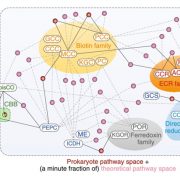
Perspective: Revolutionizing agriculture with synthetic biology (Nature Plants)
In a new Perspective by Wurtzel et al., the authors lay out SynBio’s tremendous potential to transform agriculture. Consider how we might leverage the “vast design space that plants have not occupied.” As an example, plants employ two pathways to fix carbon, and prokaryotes another six, but scientists…
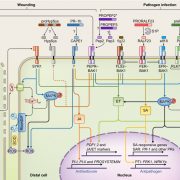
Review: The role of peptides cleaved from protein precursors in eliciting plant stress reactions (New Phytol)
Although the first signaling peptide identified in plants, systemin, is involved in stress responses, developmentally important peptide signals have largely occupied the limelight. This Tansley Review by Chen et al. summarizes recent insights into peptides with a role in stress responses: wounding, pathogen…
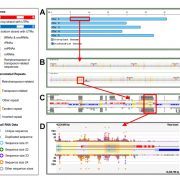
Next-Gen sequence databases: RNA and genomic informatics resources for plants (Plant Physiol)
Drawing on more than 15 years of improvements, Nakano et al. have released public websites and resources for data access, display, and analysis of plant small RNAs, from Arabidopsis to wheat and with many crops and model species represented. The tools can analyze, integrate and display the abundance…

